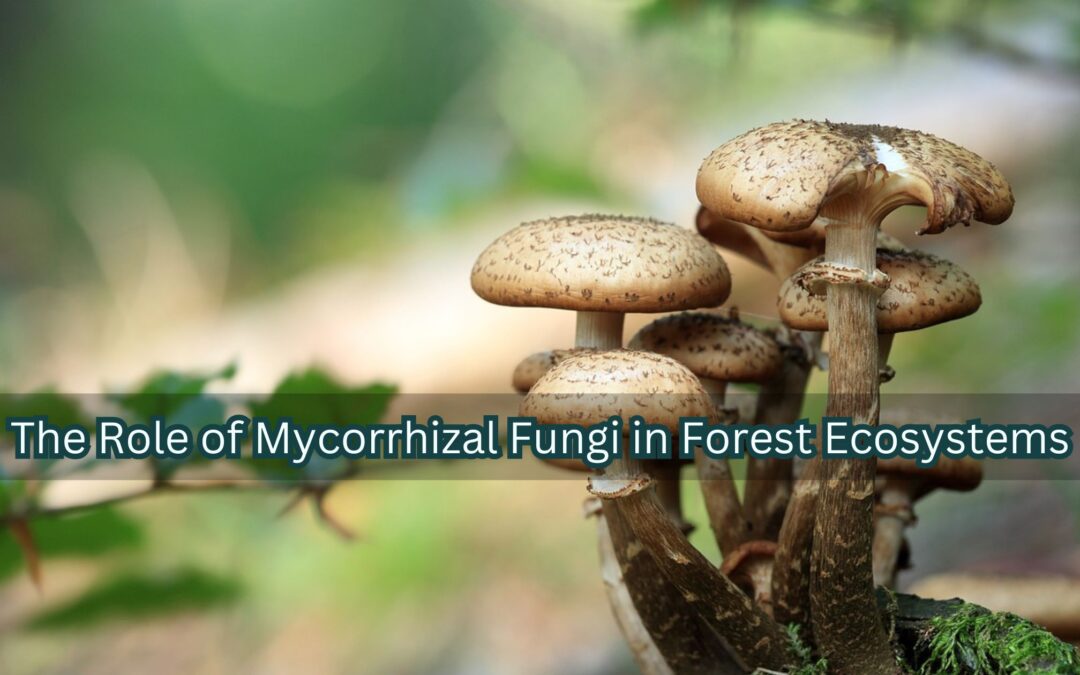Forests are among the most complex and dynamic ecosystems on Earth. Yet, beneath the towering trees and thick undergrowth lies an invisible network that plays a crucial role in maintaining forest health—mycorrhizal fungi. These underground organisms form symbiotic relationships with tree roots, helping forests thrive by improving nutrient absorption, enhancing carbon storage, and increasing resilience against environmental stress.
Understanding the role of mycorrhizal fungi can revolutionize the way we approach reforestation, forest conservation, and sustainable land management. Let’s explore why these fungi matter and how we can protect them.
What Are Mycorrhizal Fungi?
Mycorrhizal fungi are special types of fungi that attach to plant roots and help trees absorb essential nutrients. In return, trees provide these fungi with carbohydrates produced through photosynthesis. This mutually beneficial relationship has been around for millions of years, ensuring forest ecosystems remain productive and resilient.
There are two primary types of mycorrhizal fungi in forests:
1. Ectomycorrhizal (ECM) Fungi
These fungi form a protective sheath around tree roots and extend their thread-like structures, called hyphae, deep into the soil. ECM fungi are particularly beneficial to trees like pines, oaks, and beeches, helping them absorb hard-to-reach nitrogen and phosphorus. Learn more about ectomycorrhizal fungi and their role in forests.
2. Arbuscular Mycorrhizal (AM) Fungi
Unlike ECM fungi, AM fungi penetrate plant root cells and create intricate structures that improve nutrient exchange. They are mostly found in tropical and deciduous forests, where they assist trees in absorbing essential phosphorus and trace minerals. Discover more about arbuscular mycorrhizal fungi.
Why Are Mycorrhizal Fungi Important?
The role of mycorrhizal fungi extends beyond simple nutrient exchange. These fungi shape the entire forest ecosystem, ensuring stability, growth, and resilience. Here’s how:
1. Improved Nutrient Uptake
Mycorrhizal fungi expand the reach of tree roots, allowing plants to absorb more water, phosphorus, nitrogen, and other crucial nutrients. This is especially beneficial in nutrient-poor soils, where trees would otherwise struggle to survive. Read more about how fungi help trees access nutrients.
2. Better Carbon Storage and Soil Health
Healthy forests play a vital role in fighting climate change by storing carbon. Mycorrhizal fungi help transport carbon from trees to the soil, where it remains locked away for centuries. Additionally, their hyphae bind soil particles, improving moisture retention and aeration. Check out this study on fungi and carbon sequestration.
3. Boosting Seedling Growth and Regeneration
Young trees often struggle due to competition for nutrients. Mycorrhizal fungi support seedlings by delivering essential minerals and shielding them from harmful pathogens. This process is essential for natural reforestation and forest recovery after disturbances like wildfires or deforestation. Explore how fungi contribute to forest regeneration.

4. Enhancing Stress Tolerance and Disease Resistance
Forests face increasing threats from climate change, pollution, and deforestation. Trees connected to mycorrhizal fungi are more resistant to drought, extreme temperatures, and soil-borne diseases. This means that forests with diverse fungal networks have a better chance of surviving environmental challenges. Learn about how mycorrhizal fungi enhance plant resistance.
Threats to Mycorrhizal Fungi and Conservation Efforts
Unfortunately, human activities are disrupting mycorrhizal networks, leading to weaker forests and declining biodiversity. The biggest threats include:
- Deforestation – Clearing forests removes both trees and their fungal partners, breaking essential connections.
- Soil Disturbance – Activities like construction and intensive farming destroy fungal hyphae, reducing their effectiveness.
- Pesticides and Pollution – Many chemicals harm fungal communities, decreasing their ability to support tree health.
How Can We Protect Mycorrhizal Fungi?
Conserving mycorrhizal fungi is crucial for forest sustainability. Here are a few ways we can help:
✅ Reduce Soil Disturbance – Avoid excessive tilling and deforestation to preserve underground fungal networks.
✅ Support Sustainable Forestry – Encourage selective logging and organic farming practices that protect soil biodiversity.
✅ Promote Reforestation – Plant native trees and restore degraded lands using fungi-friendly methods.
✅ Reduce Chemical Use – Minimize pesticides and fertilizers that harm beneficial fungi.
For detailed strategies on sustainable forestry, visit the Forest Stewardship Council (FSC).
Conclusion: Protecting the Hidden Life of Forests
The mycorrhizal fungi beneath our forests are just as important as the trees above. They strengthen ecosystems, store carbon, support reforestation, and enhance biodiversity. Without them, forests would struggle to survive.
If we want to build resilient forests for the future, we must protect these invisible yet vital organisms. By adopting sustainable land management and conservation practices, we can ensure that forests—and the fungi that support them—continue to thrive.
Take Action Today!
Learn more about the role of fungi in forests and how you can support conservation efforts by visiting the EAT Community. Get involved, spread awareness, and be part of the movement to preserve our forests for generations to come.
Related Articles and Resources:
- The Crucial Role of Biodiversity Conservation in Thriving Urban Ecosystems
- Edible mycorrhizal fungi of the world
- The Crucial Role of Mangrove Forests in Coastal Protection and Climate Adaptation
- Forest tree growth is linked to mycorrhizal fungal
- Arbuscular mycorrhizal fungal diversity
- The Power of Mycorrhizal Networks: Enhancing Forest Health, Resilience, and Biodiversity
- Understanding Ecological Forestry Management Framework
- Home | Forest Stewardship Council


Recent Comments